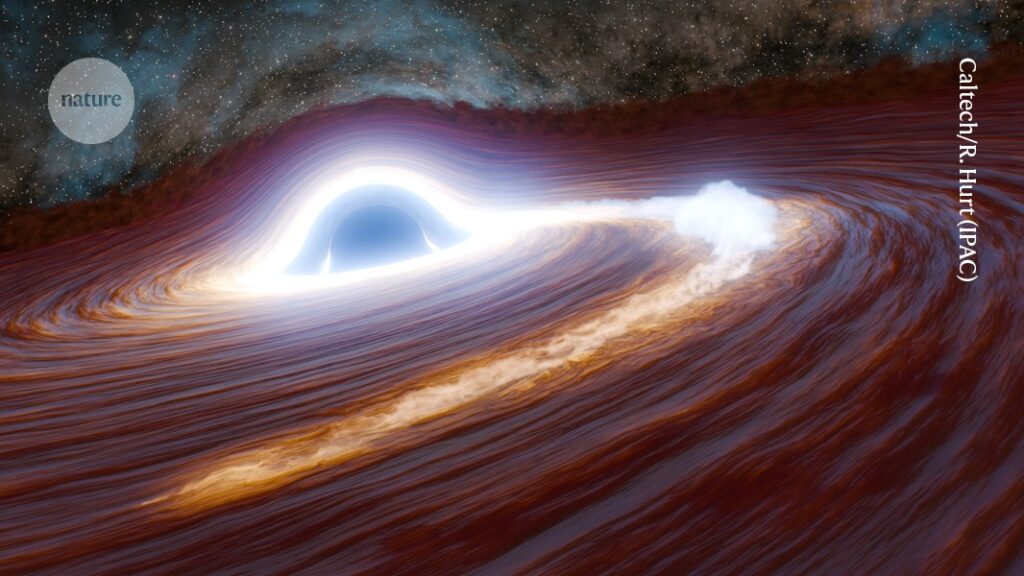The slow consumption of a star by a black hole (artist’s illustration) unleashed a blaze of light that remained bright even after five years. Credit: Caltech/R. Hurt (IPAC)
Black holes can get energy boosts by ‘snacking’, although their dish of choice is rather different from our own. Analysis suggests that the most luminous burst of light ever detected from a black hole — a fireworks show that was, at its peak, more than 10 trillion times brighter than the Sun — flared up as the black hole gobbled up a star that was at least 30 times as massive as the Sun.
The findings were published on 4 November in Nature Astronomy1.
When astronomers first laid eyes on the object in 2018, they didn’t realize it was a superflare. After noticing the object brighten, researchers zeroed in on it with the Palomar Observatory’s 200-inch Hale Telescope. But a graph of the light emitted by the object proved disappointing. “It didn’t seem nearly as interesting as we thought it was,” says Matthew Graham, an astronomer at the California Institute of Technology in Pasadena and a co-author of the paper.
However, in 2023, the team noticed that, even after five years, the black hole remained peculiarly bright. So they took a closer look using the W. M. Keck Observatory in Hawaii, which revealed that the object was roughly 3 million kiloparsecs, or 10 billion light years, away. To appear so bright at such a great distance, the jets of light must have been particularly luminous. Astronomers now say that the flare is 30 times more luminous than any previously detected blaze of light from a black hole.
A trick of the light?
The authors investigated several possible causes of the flare. Perhaps there was a supernova near the black hole, or the flare was merely a trick of the light, appearing much brighter than it was in reality because of gravity’s warping effects. But the team found that neither explanation matched well with observations.

